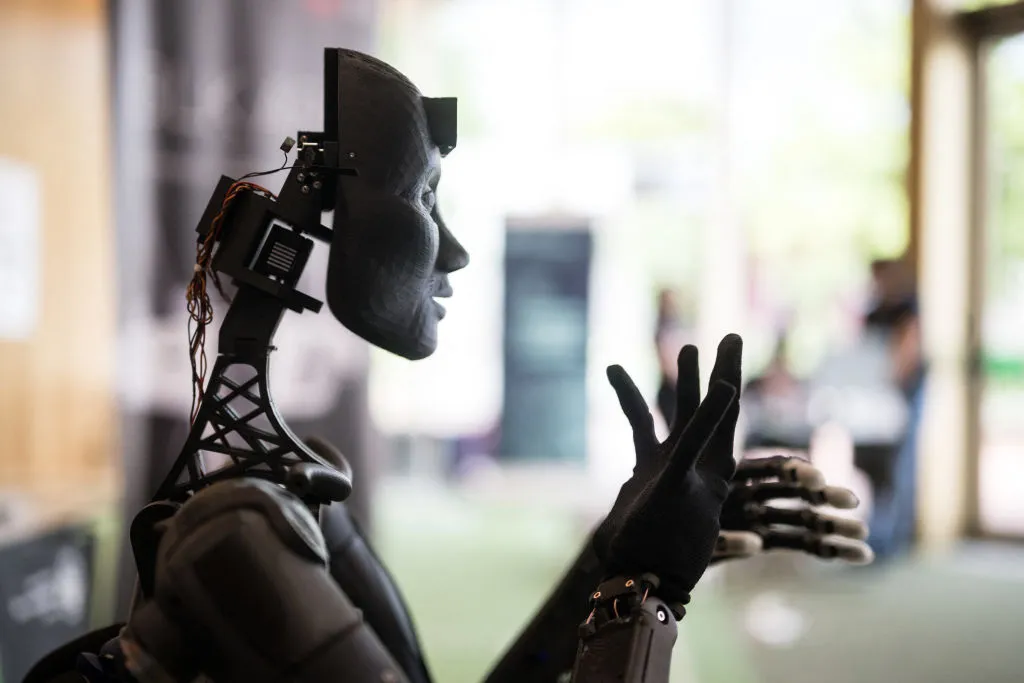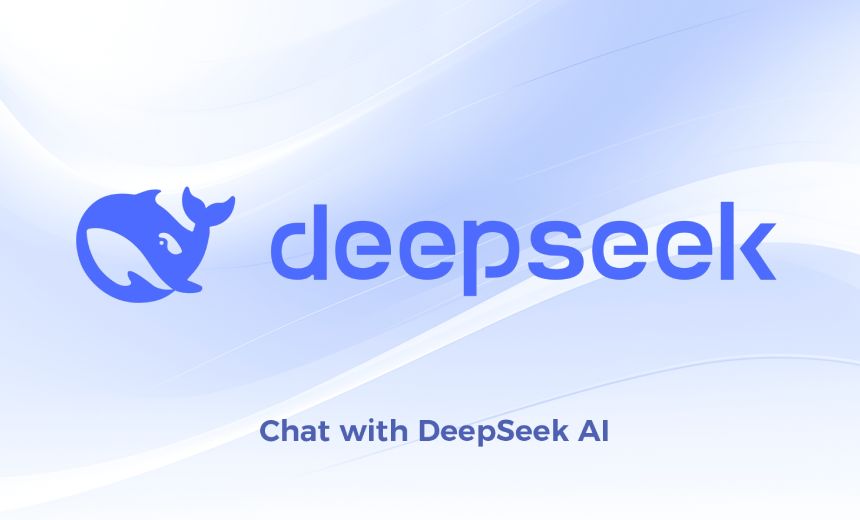
Taweezdargahajmer
Add a reviewOverview
-
Sectors Finance
-
Posted Jobs 0
-
Viewed 19
Company Description
The Ai Firm Trump Declares serves as a ‘Alarm Bell’ For America’s Tech Hub
DeepSeek states its newest AI design is as excellent as those of its American competitors, was more affordable to construct and it’s offered free of charge. What does that mean for US AI supremacy?
A Chinese business called DeepSeek, which recently open-sourced a big language design it claims carries out along with OpenAI’s most capable AI systems, is now the white hot center of attention for the AI neighborhood. Its tech is being admired as one of the finest open-source oppositions to top American AI designs, stoking anxieties about China’s formidability in the magnifying worldwide AI race and spurring U.S. start-ups to re-examine their own work after a foreign competing relatively did so much more with so fewer resources.
In late December, the small Chinese lab, based in Hangzhou, released V3, a language model with 671 billion specifications, which was reportedly trained in 2 months for just $5.58 million. That’s a cost orders of magnitude less than OpenAI’s GPT-4, a bigger design at an approximated 1.8 trillion parameters, but developed with a $100 million price. Last week, DeepSeek threw down another gauntlet, launching a design called R-1, which it claims competitors OpenAI’s o1 model on what’s called “thinking jobs,” like coding and resolving intricate math and science issues. OpenAI charges users $200 each month for such models; DeepSeek uses its own free of charge.
The power of DeepSeek’s design and its prices are already shifting the way American AI startups run their organizations. It’s an inexpensive, engaging alternative to offerings from incumbents like OpenAI, Jesse Zhang, CEO of Decagon, which develops AI agents for customer support, informed Forbes. DeepSeek’s new design will likely require American AI giants like OpenAI and Anthropic to reassess their own costs.

Eiso Kant, CTO and co-founder of Poolside AI, a unicorn that constructs AI for software application engineering, told Forbes that DeepSeek’s strength is in its engineering ability to do more with less.
“What DeepSeek is revealing the world is that when you put a strong emphasis on making your training compute-efficient, you can do a lot,” he said. “There’s amazing things that you can continue to eject of these Nvidia chips to make them extremely more effective.”

“It’s type of wild that somebody can go in and invest numerous millions of dollars for a closed source model. And after that suddenly you get an open-source one that’s just out there totally free.”

With OpenAI’s o1 design allegedly bested on specific standards, some start-ups have currently begun acquiring information to train advanced systems, Manu Sharma, CEO of data identifying told Forbes. “I believe the AGI race is kind of reset in lots of methods,” he stated. “We are going to simply see a lot more competitiveness throughout the board.”
Alexandr Wang, the billionaire CEO of training data behemoth Scale AI, recently called the design “earth shattering.” And Aravind Srinivas, CEO of $9 billion-valued AI search start-up Perplexity has stated that he plans to incorporate the design into the main search item. AI chip company Groq has actually currently included DeepSeek’s R1 design to its language processing systems. (In June, Forbes sent out Perplexity a stop and desist after accusing the startup of using its reporting without permission.)
Others are less amazed. Writer CEO May Habib informed Forbes she’s not amazed that DeepSeek’s models, trained on a significantly smaller spending plan, have the ability to match the most intelligent models in the US. In October, Writer released a model that was trained with simply $700,000, when it cost $4.6 million for OpenAI to construct a design with comparable capabilities. The business used synthetic information to decrease its training expenses.

“Even before DeepSeek’s design blew up on the scene, we have been saying that these designs are commoditizing. They’re getting more and more dispersed,” Habib stated.
Over the weekend, as buzz about the company grew, DeepSeek went beyond ChatGPT on Apple’s app store, ranking No. 1 totally free app downloads in the United States. Then, on Monday, a number of U.S. tech stocks nosedived as panic around DeepSeek’s effective model launch spread. By day’s end, AI chip behemoth Nvidia’s market cap had been shaved down almost $600 billion.
It was a shocking upending of the AI world order. “It’s kind of wild that somebody can enter and invest hundreds of millions of dollars for a closed source design,” Greg Kamradt, president of ARC Prize, a nonprofit that benchmarks AI designs, informed Forbes. “And after that suddenly you get an open-source one that’s simply out there totally free.”
For weeks DeepSeek’s designs have been lauded by some of the most popular names in the AI world consisting of Meta’s chief AI scientist Yann LeCun, OpenAI cofounder Andrej Karpathy and Nvidia’s senior research researcher Jim Fan. But news of the business’s latest achievement has sent America’s AI heavyweights scrambling to figure out simply how the Chinese business is getting such outstanding results while investing a lot less money.

“Deepseek R1 is AI‘s Sputnik minute,” investor-billionaire Marc Andreessen composed on X.
“The release of DeepSeek, AI from a Chinese business, ought to be a wakeup call for our markets that we require to be laser-focused on contending to win.”
Despite the pomp and bombast of the Trump administration’s recent AI statements, DeepSeek has actually heightened worries that the U.S. could be losing its AI edge – especially because it’s been so effective in spite of the tight US export manages that prevent it from utilizing Nvidia’s cutting-edge AI chips. The company’s latest accomplishment is a sobering counterpoint to Project Stargate, a joint venture between OpenAI, Oracle and Japanese tech conglomerate Softbank, to invest $500 billion in AI facilities.

Ahead of a conference with House Republicans in Florida on Monday, Trump acknowledged the danger. “The release of DeepSeek, AI from a Chinese company, must be a wakeup require our industries that we need to be laser-focused on contending to win,” he stated.
There are caveats to DeepSeek’s newest accomplishment. Researchers have found its AI models tend to self-censor on subjects that are delicate to the Chinese Communist Party (CCP). Security researcher Jane Manchun Wong informed Forbes DeepSeek’s models do not react to concerns about Chinese President Xi Jinping and the 1989 Tiananmen Square demonstrations. Beyond this, there are privacy concerns. Data entered into DeepSeek’s designs is stored in servers found in China, according to its policies.
Divyansh Kaushik, a vice president at national security advisory firm Beacon Global Strategies cautioned Forbes versus individuals using DeepSeek without comprehensive vetting. “Unless we can have clear nationwide security and free speech examinations of Chinese models, they should be dealt with like propaganda arms of the CCP,” he said. “They must be dealt with as Huawei on steroids.”
The problem is DeepSeek’s value proposal: a cutting-edge AI reasoning design that’s complimentary to use and open in the closed, fee-based AI world being constructed by business like OpenAI and Anthropic. “It’s much better to have a Chinese design that is open source versus an American design that is closed source,” said Labelbox’s Sharma.
.jpg)
